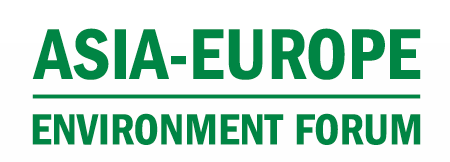The Asia-Europe Environment Forum (ENVForum) published a report proposing sustainable development indicators (SDIs) to assess the status and monitor progress towards 11 proposed goals and sub-goals.
‘Sustainable Development Goals (SDGs) and Indicators for a Small Planet: Part II: Measuring Sustainability' is designed to act as a practical handbook for policy-makers involved in designing and implementing indicators for the SDGs.
 September 2014: The Asia-Europe Environment Forum (ENVForum) published a report proposing sustainable development indicators (SDIs) to assess the status and monitor progress towards 11 proposed goals and sub-goals. Titled ‘Sustainable Development Goals (SDGs) and Indicators for a Small Planet: Part II: Measuring Sustainability,’ the report is designed to act as a practical handbook for policy-makers involved in designing and implementing indicators for the SDGs.
September 2014: The Asia-Europe Environment Forum (ENVForum) published a report proposing sustainable development indicators (SDIs) to assess the status and monitor progress towards 11 proposed goals and sub-goals. Titled ‘Sustainable Development Goals (SDGs) and Indicators for a Small Planet: Part II: Measuring Sustainability,’ the report is designed to act as a practical handbook for policy-makers involved in designing and implementing indicators for the SDGs.
The paper proposes indicators for “10+1” illustrative goals: poverty and inequality; health and population; education and learning; quality of growth and employment; settlements, infrastructure and transport; sustainable consumption and production (SCP) and economic sectors; food security, sustainable agriculture and fisheries; energy and climate change; water availability and access; biodiversity and ecosystems; and adaptive governance and means of implementation (MOI). A goal statement and sub-goals accompany each goal.
The authors – László Pintér, International Institute for Sustainable Development (IISD)-Europe and Central European University (CEU), Dóra Almássy (CEU) and Sumiko Hatakeyama – propose indicators for each sub-goal to address the social, economic and environmental dimensions of sustainable development, and discuss the pros and cons of each indicator. For instance, for the poverty and inequality sub-goal on intra and inter-generational social equity, they suggest the World Bank’s Human Opportunity Index (HOI) to measure the social dimension, the UN Development Programme’s (UNDP) Inequality Adjusted Human Development Index (HDI) to assess economic aspects, and the Global Footprint Network’s overuse of available bio-capacity by the present generation to measure environmental dimensions. The authors caution that these indicators are aggregates of several indicators, noting over-aggregation may mask important aspects or place too much emphasis on less important issues.
Suggested indicators for biodiversity and ecosystems include: awareness of protected areas (PAs); willingness to pay for PAs; coverage of PAs; PA overlays with biodiversity; public participation in biodiversity monitoring; proportion of fish stocks within safe biological limits; status of species in trade; the Red List of Threatened Species; and the Living Planet Index.
To develop the indicators, the authors examined existing global and national mechanisms for measuring progress in implementing sustainable policy. The authors analyzed 14 countries in Asia and Europe: Australia, Bangladesh, China, France, Germany, Hungary, India, Indonesia, Japan, Poland, Republic of Korea, Singapore, Sweden and Switzerland.
“In many cases indicators and related data are available, although with great variation from country to country,” the authors conclude. They note significant differences in data availability among countries based on their level of development. They recommend considering monitoring aspects before setting targets, and considering new data collection methodologies to further improve indicators, such as GIS for agriculture, biodiversity and other land use topics and internet surveys for social topics.
The publication is the second in a series of three studies on the post-2015 development agenda. ENVforum is a partnership initiated by the Asia-Europe Environment Foundation (ASEF) with ASEM SMEs Eco-Innovation Center (ASEIC), the Swedish International Development Agency (Sida), the Hanns Seidel Foundation Indonesia (HSF) and Institute for Global Environmental Strategies (IGES), in cooperation with the UN Environment Programme (UNEP). The report was published in cooperation with IISD. [Publication: Sustainable Development Goals and Indicators for a Small Planet: Part II: Measuring Sustainability] [IISD RS Story on Interim Report]